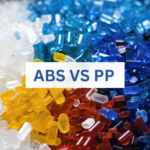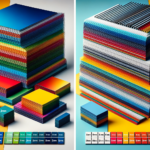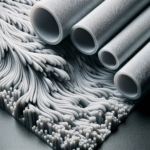Plastics are a kind of resin that will be easily molded and are often used as an inexpensive, durable packaging material.
There are six major sorts of plastics commonly in use. Some plastic items are made from a mix of various resins.
High-density polyethylene (HDPE) plastics are one among the most popular and durable thermoplastic materials available in the market that are used from plastic containers, bottles, bags to plastic, everywhere we look, we may notice most of the plastic items manufactured with Polyethylene.
But what accurately is high-density polyethylene? What makes it so multipurpose and why is it so popular? Are HDPE plastics worthy or Are we too influenced by their use due to their cost-effectiveness?
These questions arise here, ain’t they?
Don’t worry!
During this article, we will seek out the answers to your questions uplifted in your mind;
so, let’s cracked that:
Table of Contents
Introduction to HDPE
High-density polyethylene which is commonly called HDPE is known for its best density and enormous strength and is reliable up to an average lifetime of quite 50 years.
It is a synthetic polymer made up of petroleum which is usually utilized in the production of plastic bottles, water pipes, corrosion-resistant piping, and more.
Without a doubt, HDPE is among the foremost widely used plastics around. Being non-toxic, odorless, and insipid, HDPE boasts a better volume of production throughout the globe.
It is an essential more glorious sort of object and tool than you would possibly think. Mostly used to manufacture toys, water tanks, car dashboards, etc.
HDPE works as the enemy of moisture and survives solid at a temperature that helps it to endure insects, decaying, and other chemicals.
It is found as harder than standard polyethylene which creates no harmful radiations during its production or its use by the buyer.
Let’s take a better check out the following main keys of HDPE:
Starting with the features:
HDPE is out there in several colors including natural black, red, yellow, green, blue, and natural shades.
Product Features
- Lightweight
- Easier to weld.
- Good corrosion and chemical resistance.
- Easy to fabricate and use the machine.
- Low cost
- Impact resistance from 40-90-degree C.
Now, time for the benefits of HDPE as their main components.
Tough & Strong: The HDPE plastic bears high impact resistance and also tolerates dynamic and static loads. These don’t crack or break in freezing conditions. HDPE plastic can easily bear rough handling and traffic loads.
Non-hazardous: HDPE plastic is safe cause it has components; inert and non-toxic. That’s why HDPE is used to transfer drinkable water.
Corrosion Resistant: HDPE materials are used readily for underground installations. The reason being HDPE is immune to electrolytic and galvanic corrosion.
Passive to chemicals: HDPE carries excellent resistance to chemicals which makes them highly suitable for handling corrosive acids and alkalize. Since these pipes are entirely neutral to chemicals that’s why they’re used widely in chemical plants.
Light-weighted: HDPE plastics are several times lighter than conventional pipes. That’s why their transportation and installation is cost-effective and straightforward.
Smooth external and internal surface: The HDPE has smooth external also as internal surface, thus allowing little frictional resistance to fluid flow. Furthermore, HDPE easily allows solid particles to be flown along with the fluids within the pipes.
Flexibility: One of the key features of HDPE is that they’re extremely flexible and bend easily without cracking. This key property of HDPE allows long lengths of small diameter pipes to be transported in the sort of coils.
Quick installation: Because of HDPE lightness in weight, the transportation, installation process, and handling become easy. Besides, HDPE doesn’t need heavy machinery to maneuver them.
High electrical resistance: HDPE is widely used as electrical conduits as their dielectric strength is high. Also, no stray electrical currents are often transferred from outside.
Long life: HDPE has an average lifetime of quite 50 years if used at normal working pressure and temperature. As against conventional pipes like PVC, GI, steel, cement, etc., have a couple of years of life.
It’s good to understand why HDPE is so compatible with consumer applications; we list a couple of reasons here:
- It is stronger than standard polyethylene, which makes it an efficient barrier against moisture;
- It remains solid at room temperature;
- It remains solid against rot, insects, and other chemicals;
- It doesn’t produce harmful radiations during production or when used by customers; and
- It doesn’t leak pollutants into the water or soil.
Everything has pros and cons, so does the HDPE has:
Disadvantages of HDPE:
- Susceptible to worry cracking
- Lower stiffness than polypropylene
- High mold shrinkage
- Poor UV- and low heat resistance
- High-frequency welding and joining impossible
So what consumer products use HDPE?
HDPE is usually used to compose:
- Plastic bags
- Opaque juice, milk, and water containers
- Bleach, shampoo, and detergent bottles
- Dishes
- Trash bags
- Yogurt and margarine containers
- Medicine bottles
- Cereal-box liners and many more.
Why Use HDPE?
The main use of HDPE is it replaces denser overpriced materials. It aids venture production to generate corrosion resistance, high malleability, robust strength goods. HDPE is an incomparable blend of inexpensive, strong, and non-toxic. Find Any Shape plastics on gust









